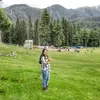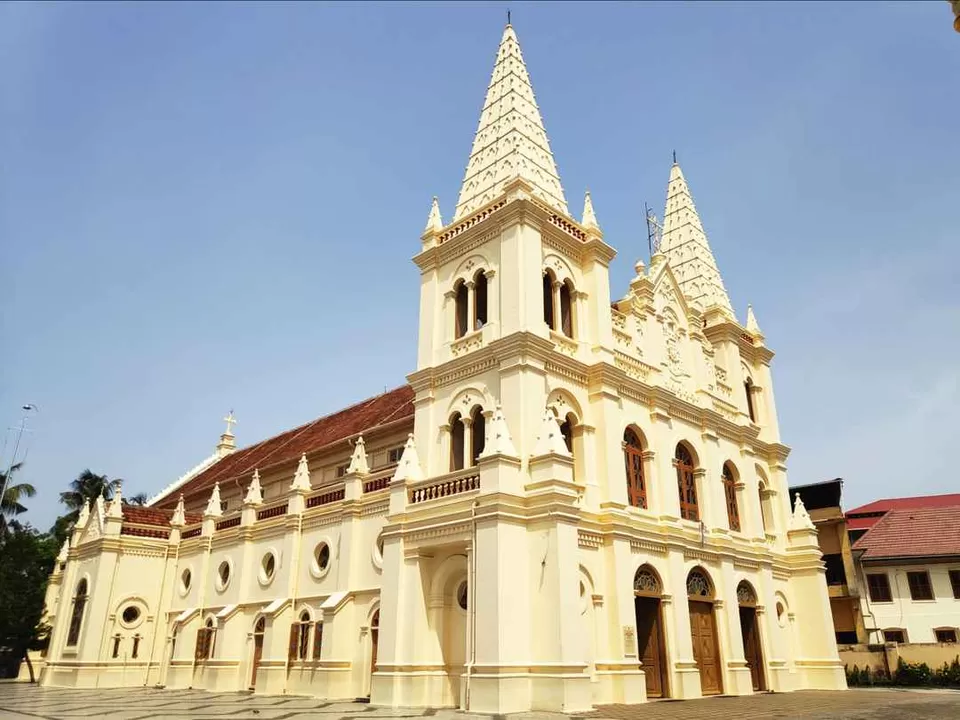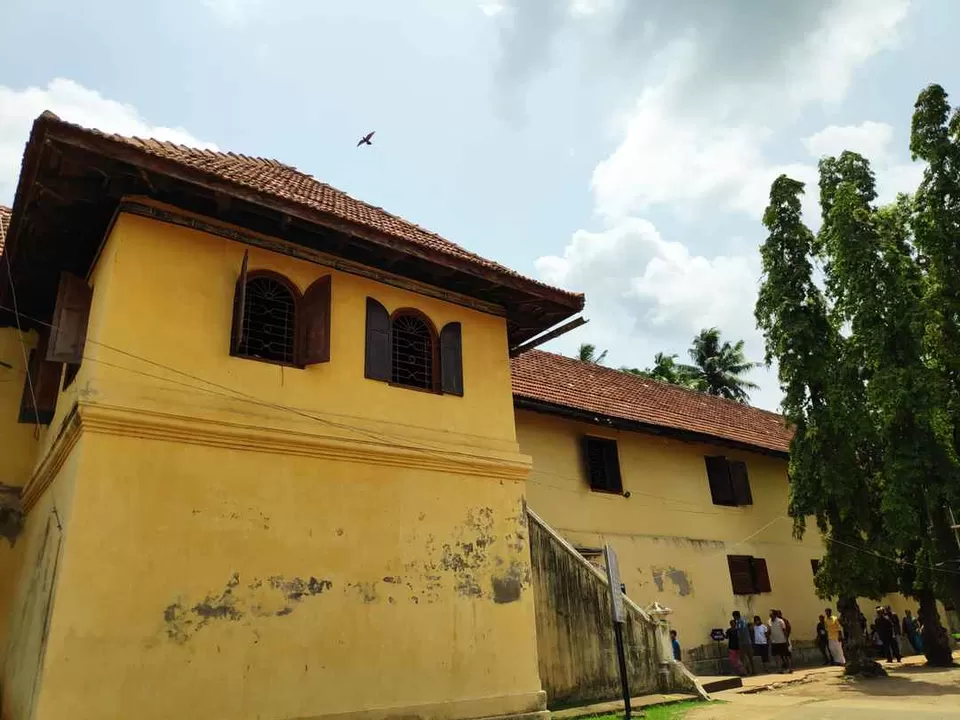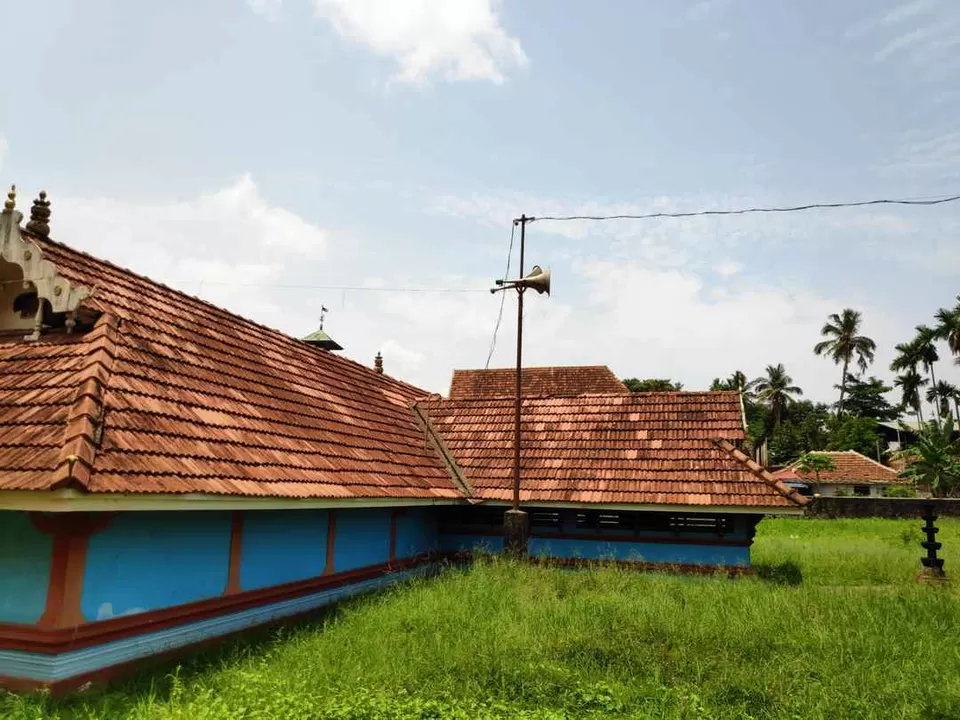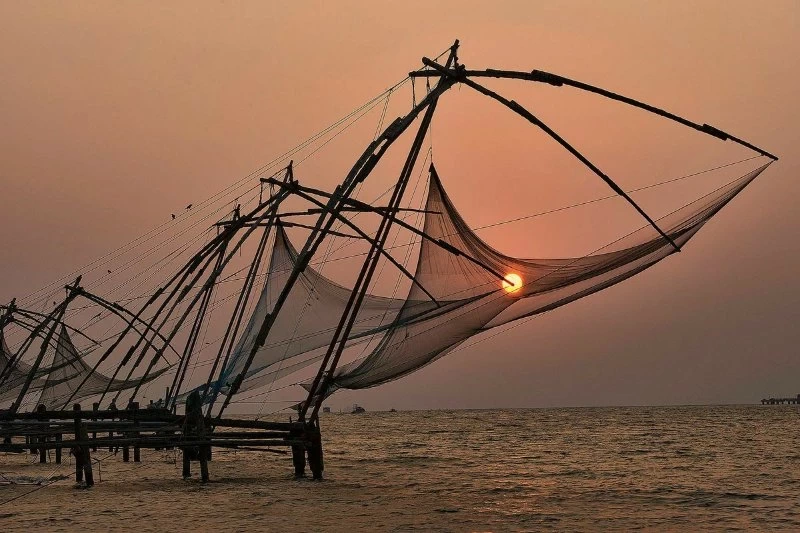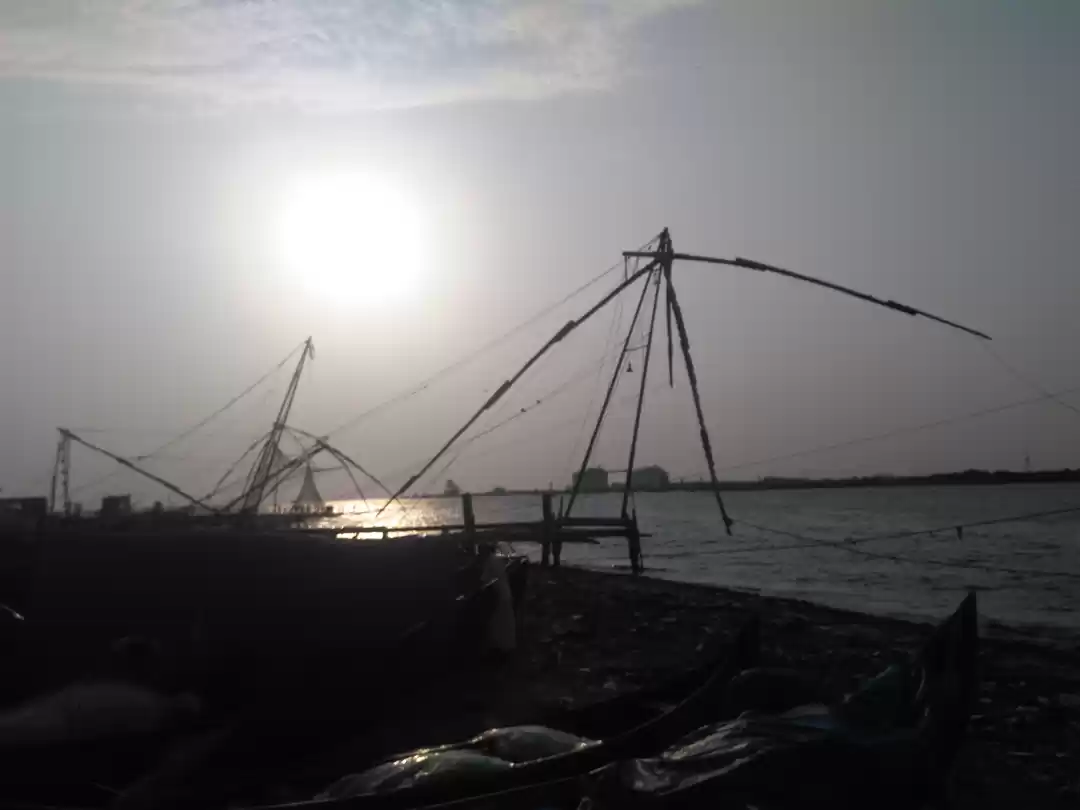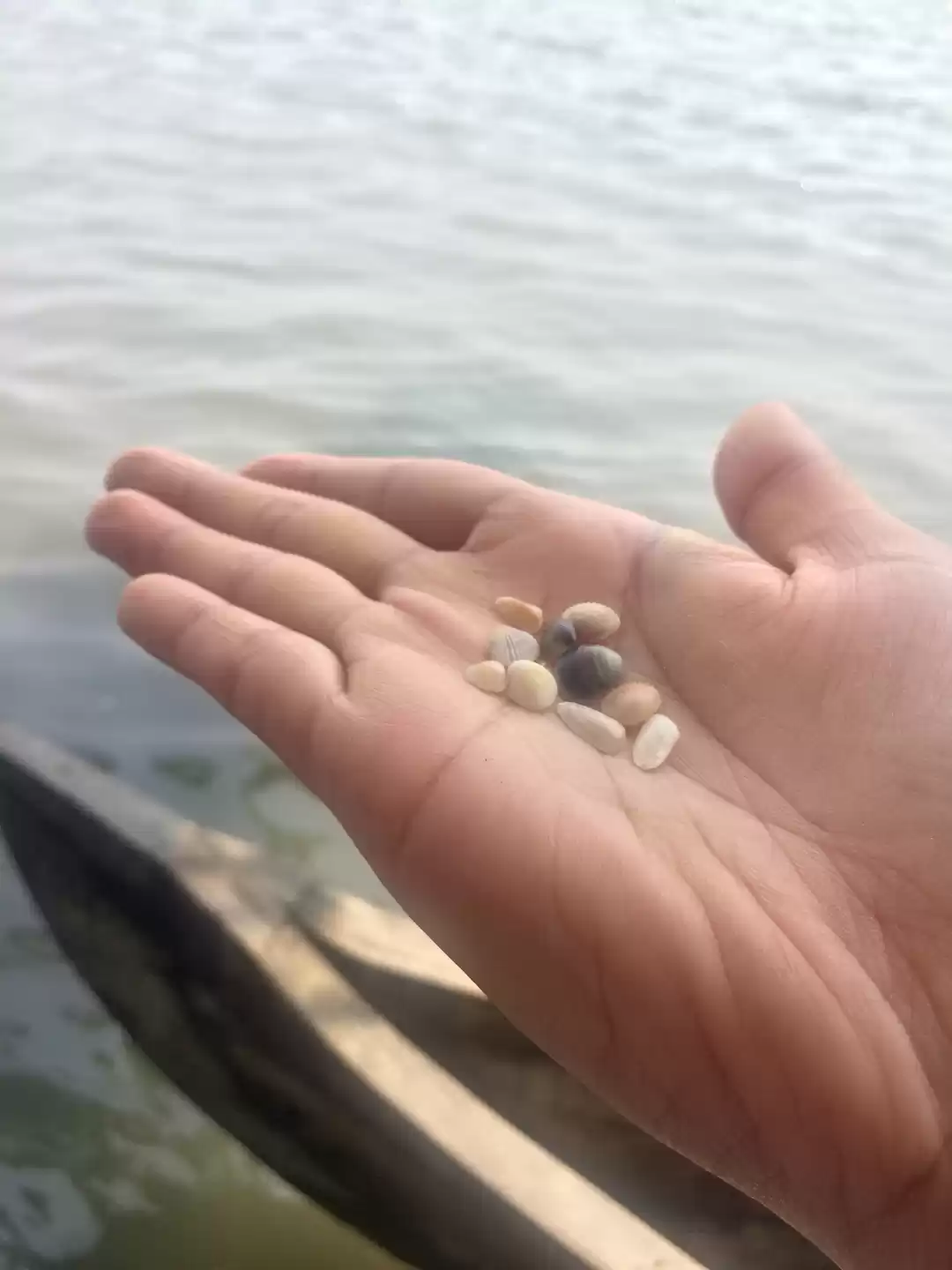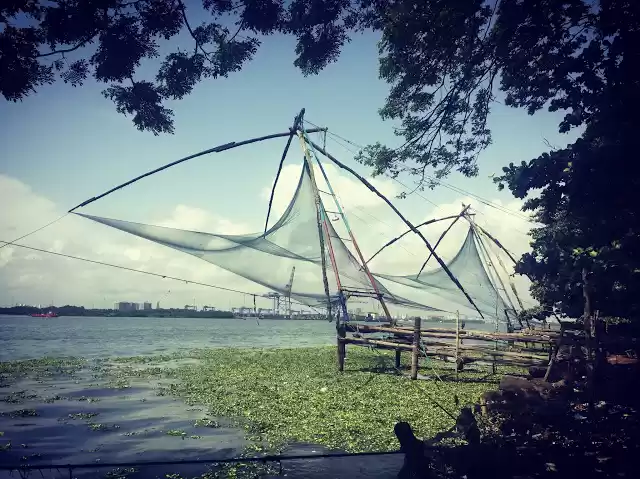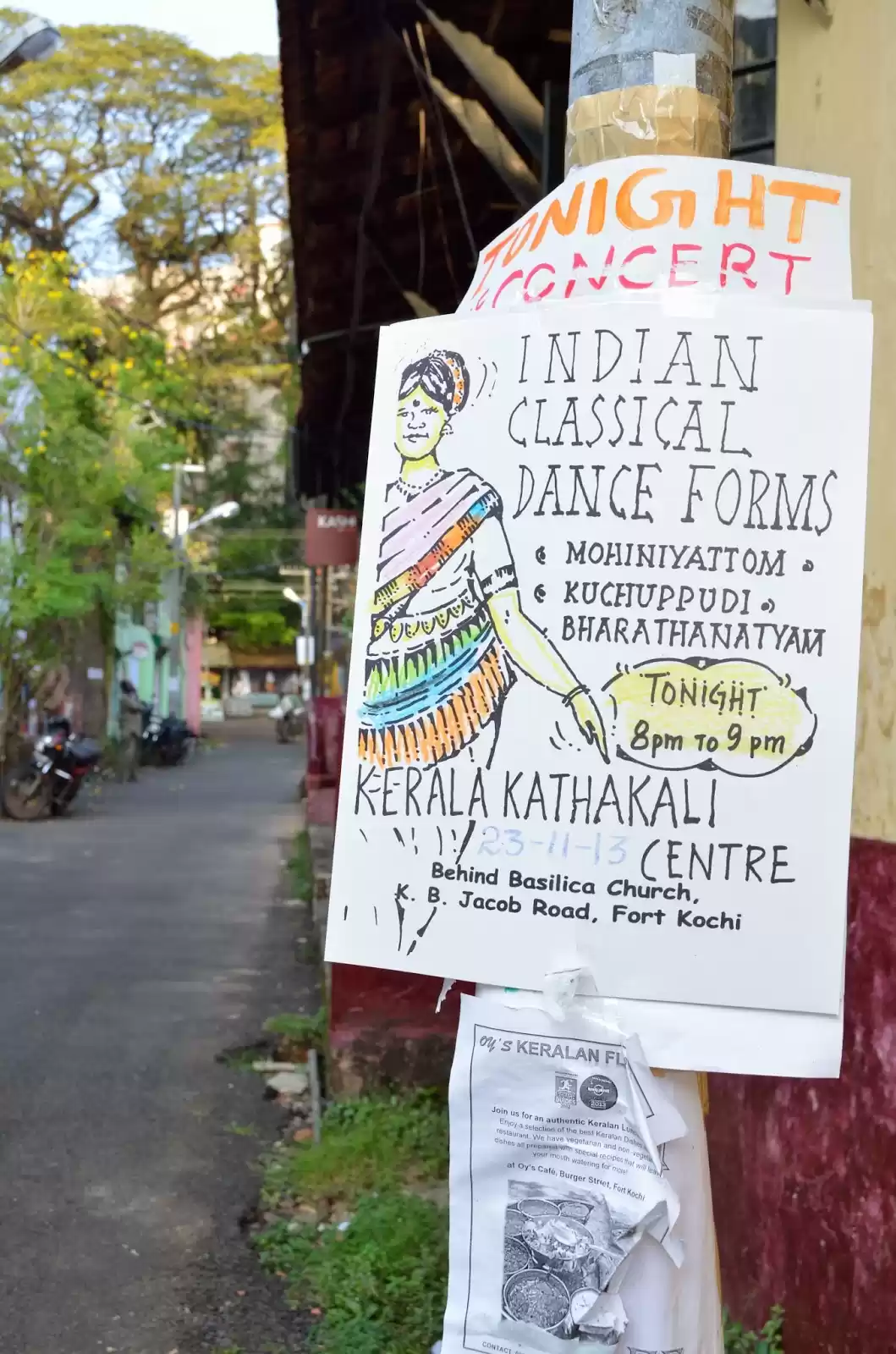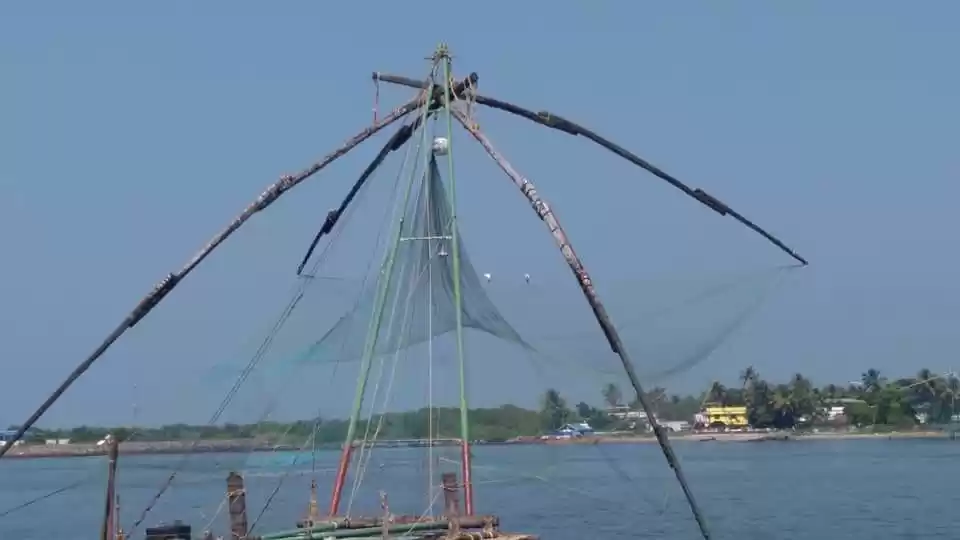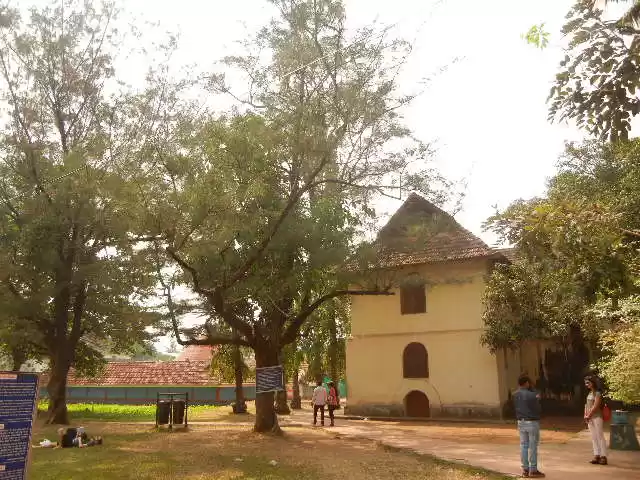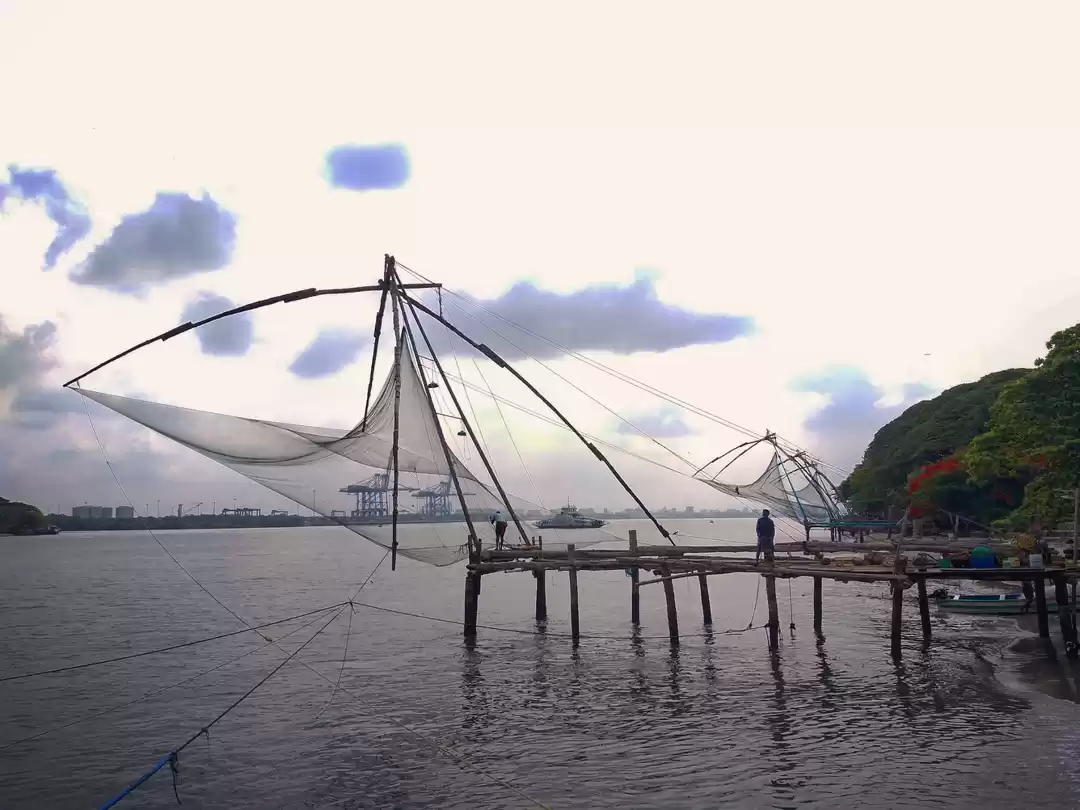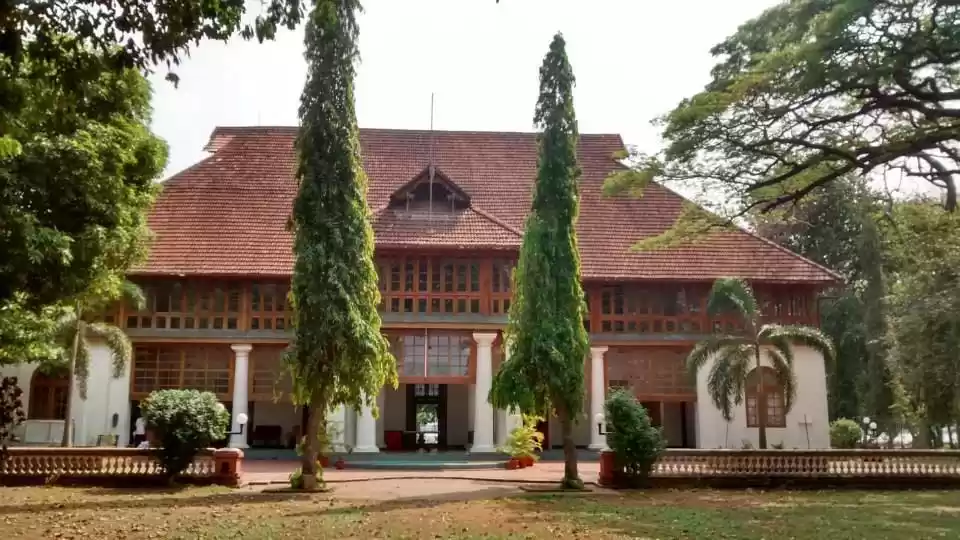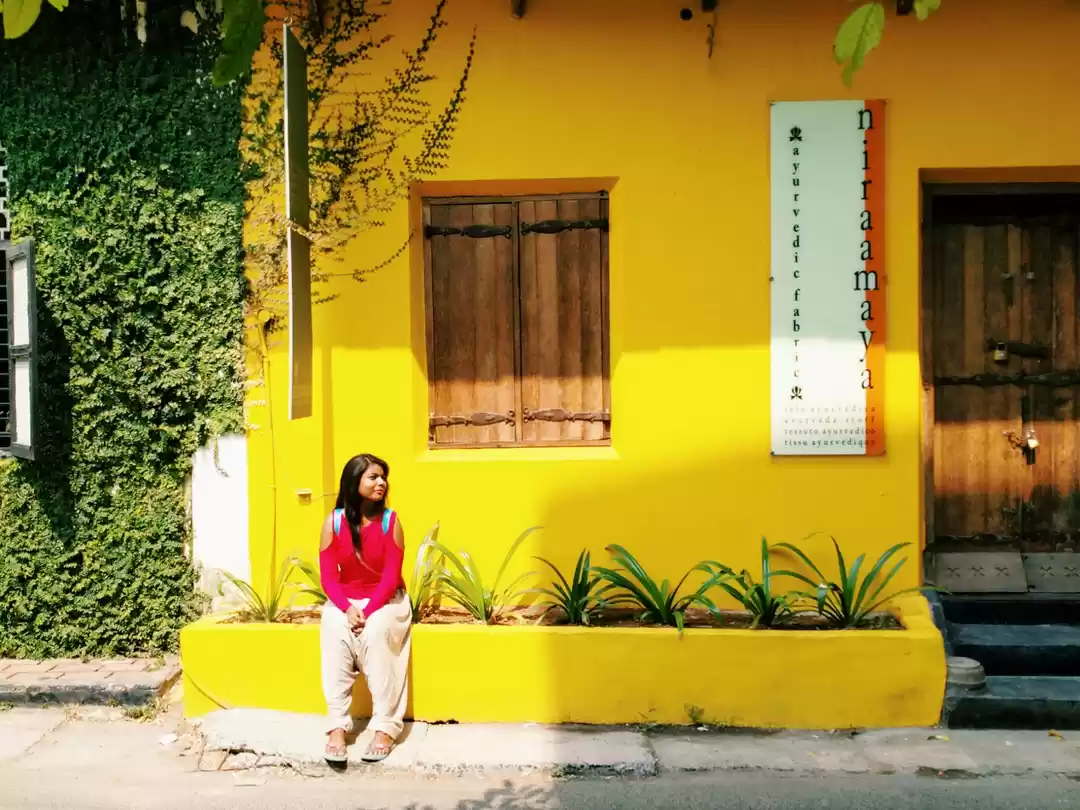
The evening we reached Fort Kochi, I curiously scanned the European styled hotel buildings, the vibrant cafes and restaurants in the vicinity. We hopped into the nearest 'Breadworld' cafe for a quick snack. The thick plastered stone walls, arched doorways, heavy wooden door and window frames, cemented floors and old bulky ceiling fans inside the cafe reminded me of my childhood days. Memories took me back to the days we had spent growing up in my parents' govt. quarter on their Indian government jobs. The only difference visible to me was the maintenance of these treasured buildings in Fort Kochi!
It is not just another touristy coastal town but a walk down the historic lanes of heritage intertwined with its centuries old colonial structures that has seen numerous visitors, some stayed, some left but many left their impressions forever.
About Fort Kochi Town
Fort Kochi, a fishing village in pre-colonial India is separated from the mainland of Kochi (Formerly known as Cochin) on the Western Coast of India and water-bound by the Arabian sea. Its geographic setting elevates the gateway to Kerala and South India for its spice trade. This port of coastal India has attracted numerous explorers, travelers, traders overseas since centuries.
We spent a day in the colorful coastal town of Fort Kochi on our last visit to Kerala in the summers of 2019.
Being an off season for tourism, it seemed like a laid back little coastal town where you unwind in its pretty art cafes sipping on freshly brewed coffee or just strolled around the colourful lanes admiring its stretches of street arts, souvenirs and handicraft stores.
Unfolding History in the Lanes Fort Kochi -
We rode on a bike around the colourful lanes of Fort Kochi exploring the pre-independence cobbled paths of colonial India.
Churches of Fort Kochi-
Beautiful white churches adorn the streets of Kochi owing to the fact that Christianity had its first roots here. We visited these two medieval European churches and were marveled by the volume of history and artistry they still hold.
Santa Cruz Cathedral Basilica was also constructed during the 15th century and ever since has been frequented by devotees and tourists throughout the year. Its whitewashed exteriors, pastel interior pillars, the canvases depicting the Last Supper (A replica of Leonardo De Vinci's painting) hanging from the ceiling and the Death on the Cross at the entrance are its major attractions and worth the admiration.
St. Francis Church on Church Street, the oldest church of India was first constructed in the 15th century and since then has been a witness to the European Colonialism in India. Another reason for its historical significance is Vasco De Gama's gravestone inside the church. The Portuguese explorer was buried here in 1924 after his death. Though his son later took the remains back to Lisbon(Portugal), the gravestone is still preserved here.


Mattancherry Palace -
This was the Royal House of the hierarchical Kings of Kochi. This palace was originally constructed and gifted by the Portuguese to the then King in 1555. After the Dutch took over Kochi, this palace was renovated by them in 1663 and is thus referred as the Dutch Palace ever since.
This quadrangular building is a traditional style sloping roof palace housing the coronation hall, dining hall, assembly hall, the royal bed chambers upstairs and the ladies rooms downstairs which can be accessed by wooden staircases. The complex also houses a Hindu Temple in its premises.
Today, it stands as a museum displaying hand-painted murals, artifacts of the royal family, the pictorial depiction of the evolution of the kingdom like the first postal stamps, currency, traditional costumes.
Paradesi Synagogue and Jew Town -
The Jews came to India and flourished as spice traders across Europe and the Arab countries. The King of Kochi had donated some land to these European Jews where they settled and flourished in their spice trade. This place is the present day Jew Town where we saw reminiscences of few old Jew buildings, crafter stores, spices and artifacts shops.
Its a traveler's delight to walk around these streets while witnessing old treasured artifacts of brass and shopping for various Indian spices. The area exhibits many art cafes which has collection of treasured artifacts and is a walk into a medieval flea market .
We also explored the Kochi Police Museum and an Antiques Museum traversing through the lanes of Jew Town.
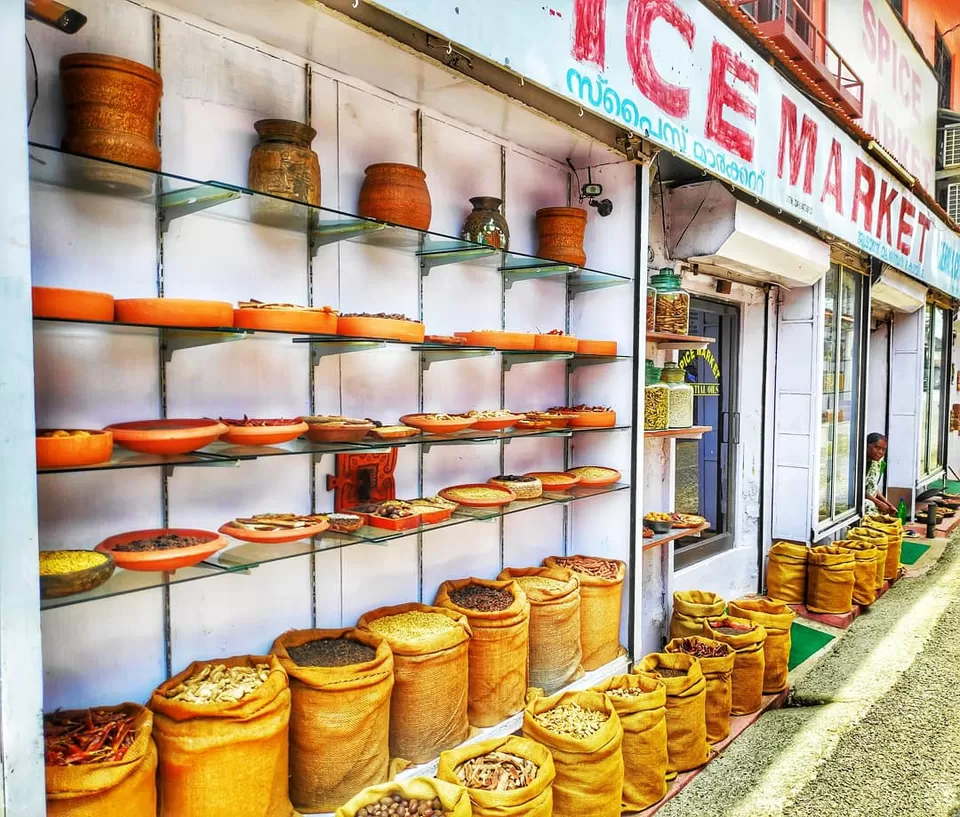
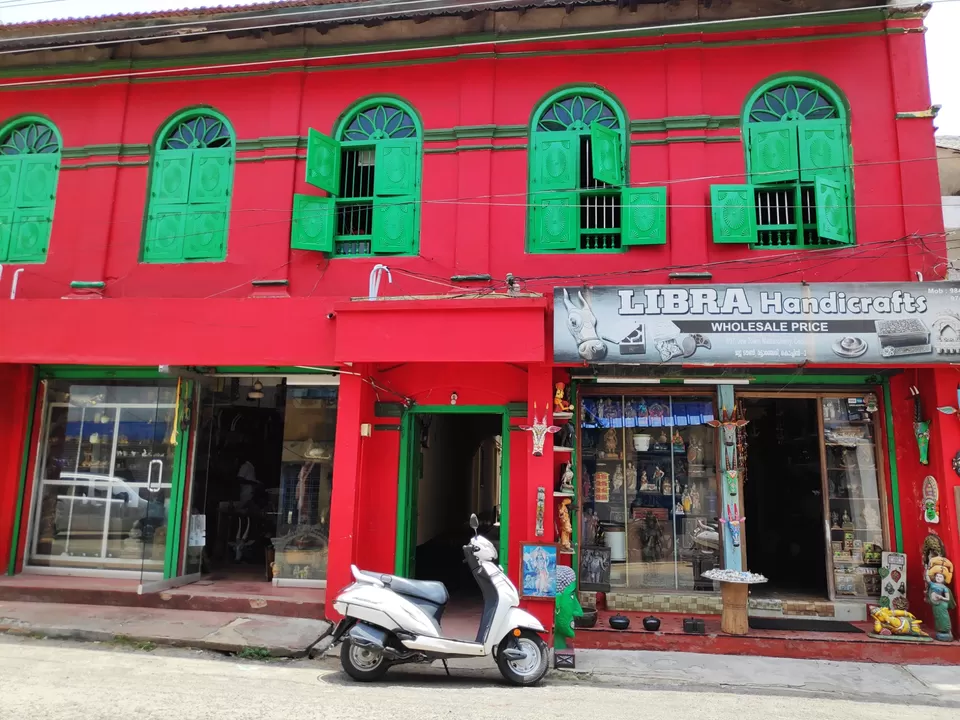
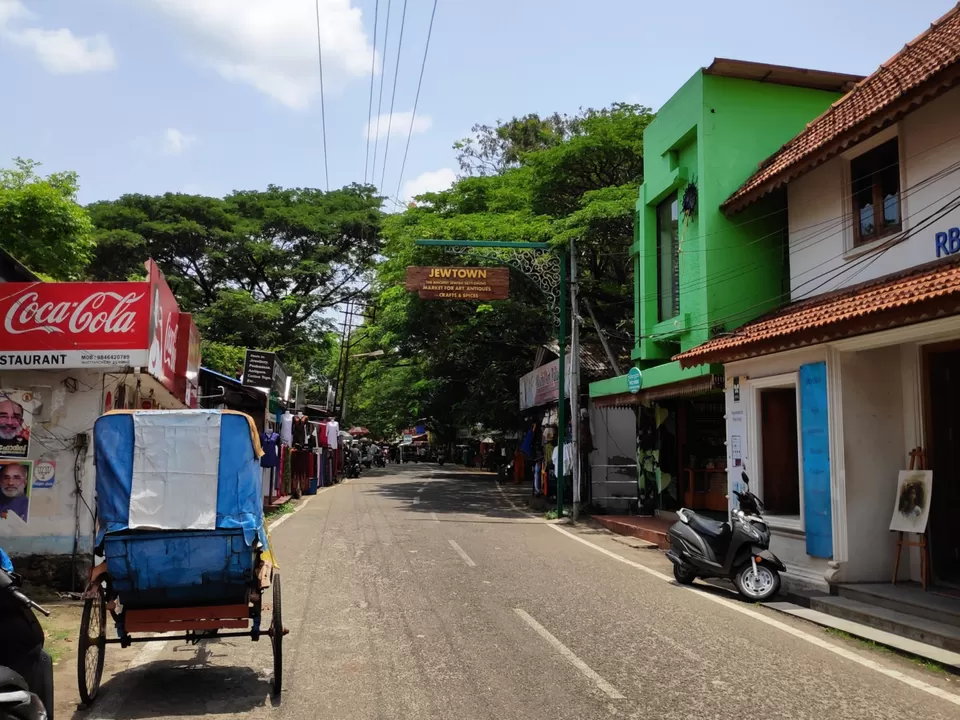
One of the few surviving Jew Synagogues in Kochi is the Paradesi Synagogue constructed in 1568 which is functional till date and attracts many tourists to Jew . We couldn't view the interiors of the Synagogue because we visited on a Saturday when its closed.
Its said most of the Jews have migrated from Kochi to Israel or Australia around 1948.
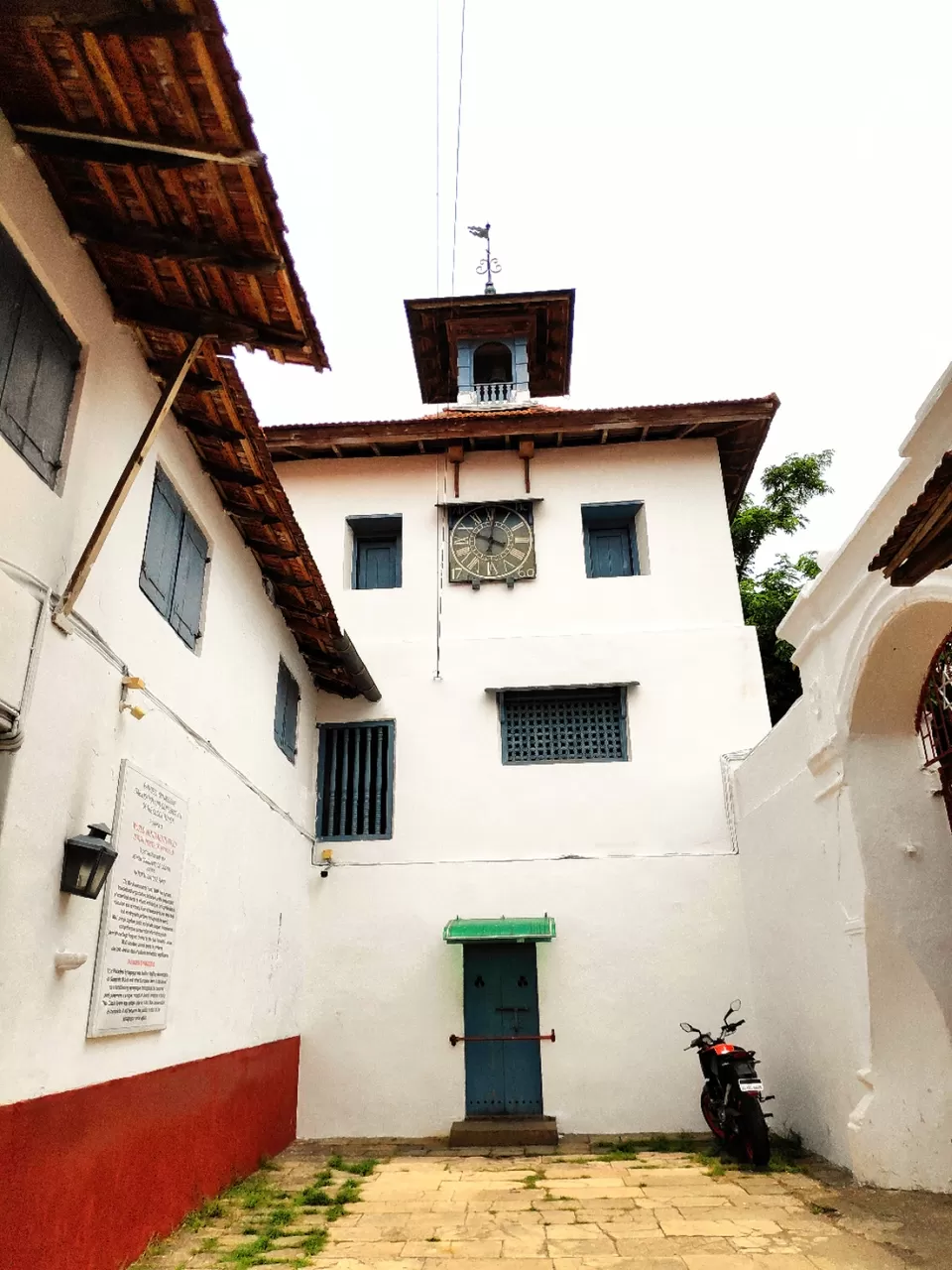
Preserved Cemeteries -
Fort Kochi has still preserved the Dutch cemetery which has over hundred gravestones of the Dutch community who ruled Kochi for 130 years. Their gravestones are tomb shaped like the 18th and 19th century Dutch architecture and the cemetery is guarded by stone walls making it inaccessibly to the public. However one can peep through the gate just to have a view. This is next to the St. Francis Church and is looked after by the Churches of South India.
Another Cemetery that we came across is the Jew Cemetery at the end of the Jew Town Lane. This is very close to Paradesi Synagogue. The Jew Cemetery too has tomb stones inscriptions in English and Hebrew and can be seen from the locked gates. The Cemetery is in disuse but marks the Jewry presence in Fort Kochi.
Chinese Fishing Nets -
These triangular tall stationary fishing nets lined along the shores of Fort Kochi were first introduced around 500 years ago by the Chinese explorer and has been the regions staple every since. This is a major tourist attraction during dawn and dusk around the Vasco De Gama square and adds to a picturesque sunset along the shore. Evenings can be spent here while enjoying some locally cooked fresh catch of the day sold by the vendors here.
Inspiration from the Indian Navy -

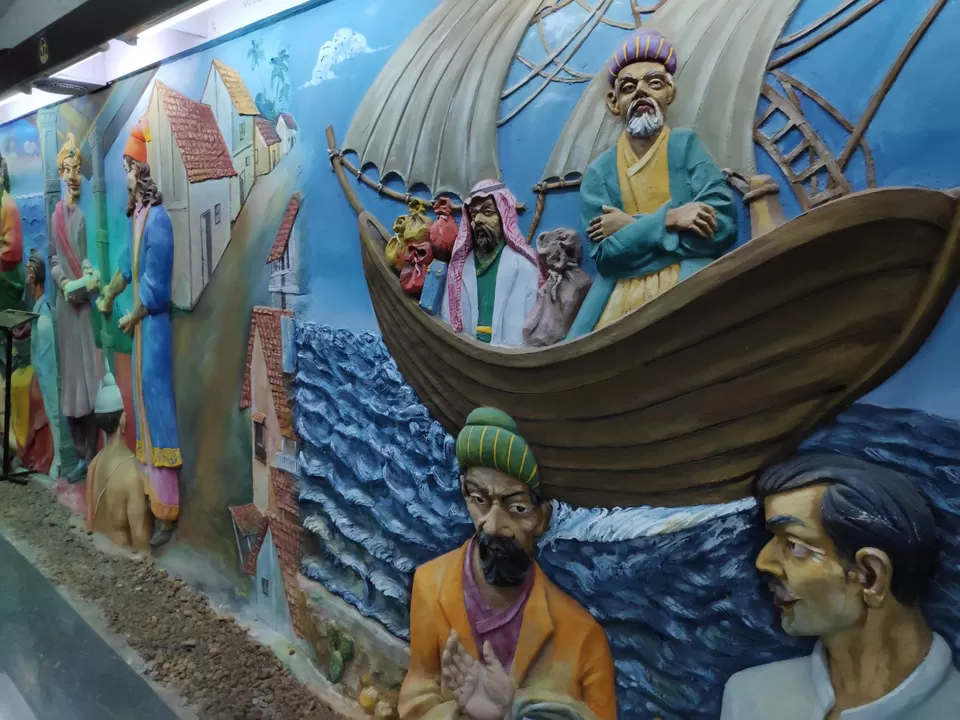
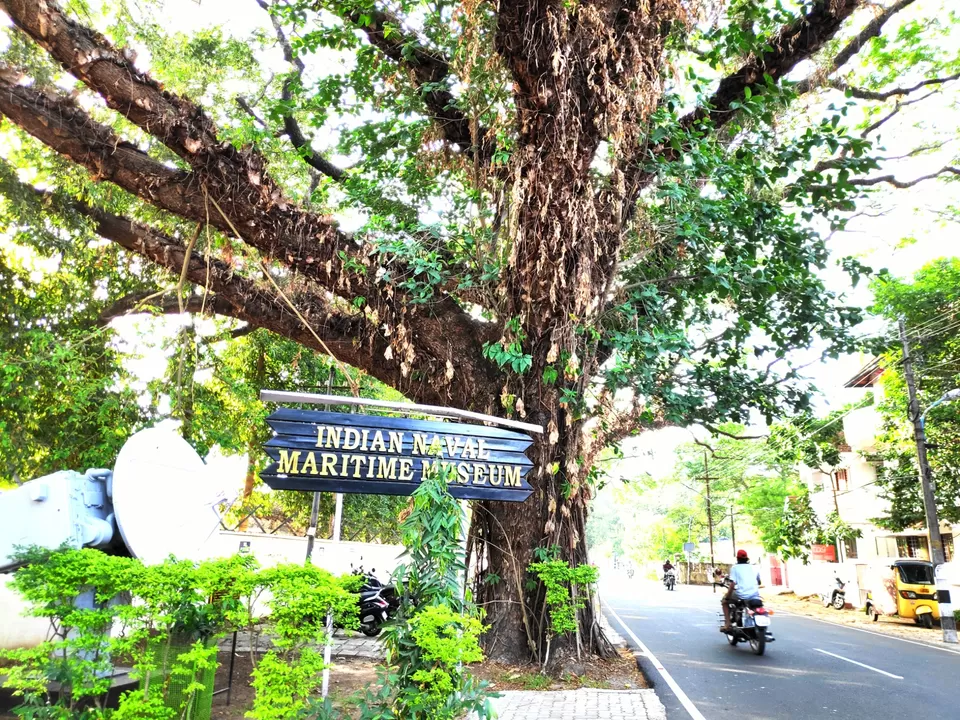
This place is sure to level up ones patriotism and fascinate the youngsters aspiring to join the Indian Navy. We thoroughly loved the guided tour by the Museum staff and would highly recommend it.
The culture hub of South India -
Kerala is well known for its cultural inclination for various traditional Indian art forms across the state. Kochi evenings spent witnessing these cultural art forms an enchanting experience. One can enjoy Kalaripayattu (Traditional Martial Art) and Kathakali (Indian Classical Dance form) in various Cultural centers across Fort Kochi. We chose to spend the evening at the Kerala Kathakali Center. It was a magical 2.5 hours to end the day with. We were awestruck by the skillful facial paintings of the dancers and mesmerized by the performance themed on 'Narakasura Vadham' , a Hindu mythological tale.
Besides the dance, it was interesting to know about the natural colours used by the dancers, some insight into the expressions and movements, the dedication and training of over six years their group undergone in this classical art form.
A personal suggest would be to include this with your Kerala itinerary.
Conversations over Art and Food -
That one thing which is inevitable when you are around Fort Kochi are the colourful street wall art. Every lane around the town is lined by vibrant buildings or painted wall art. The lanes of Church Street, Princess Street, Burger Street, Jew Town are bubbling with art and colour.
The coffee brewed from freshly ground beans, in-house baked wheat bread sandwiches and cookies in these pretty European styled cafes makes me want to go back again and again. Not only the savory but the main course menus in the restaurants are delicious as . Be it the the Malabar Fish Curry or fish fry or even the vegetarian delicacies in restaurants like Rasoi or the filling burgers in the cafes like Bench will leave you wanting more of it.
Something unique about most cafes in Kochi are that, they are 'Art Cafes'. So its not just food or beverage that attracts you but the explicit display of art as wall paintings, figurines, crafts, preserved antiques in these cafes are a creative exhibit across this town.
For the budget traveller, there is a spread of street food junctions near the beach and also along the giant shaded trees of Church street.
From Architectures to Rain trees of Fort Kochi-
The town is a conservatory of old European styled buildings, colourful Kerala homes, centuries old churches, tiled slope roof palaces and temples, prevalent Jewry cultured streets. The locals are to be applauded for preserving the past not only in the exterior but also in their interior decors like the manually operated fans hanging from the St.Francis Church's ceiling, wooden windows, frames and interior decors, old lighting, switch boards in their pretty little cafes and much more.
One thing that you will notice around the streets of Kochi are the grand trunk Rain trees shading this coastal town since decades and thanks to the effort of the locals who won' let them be chopped like most expanding cities of India.
This pretty town of Fort Kochi which was named after the Fort Emmanuel though the fort is in ruins today is nothing about the Dutch Fort but much more than that.
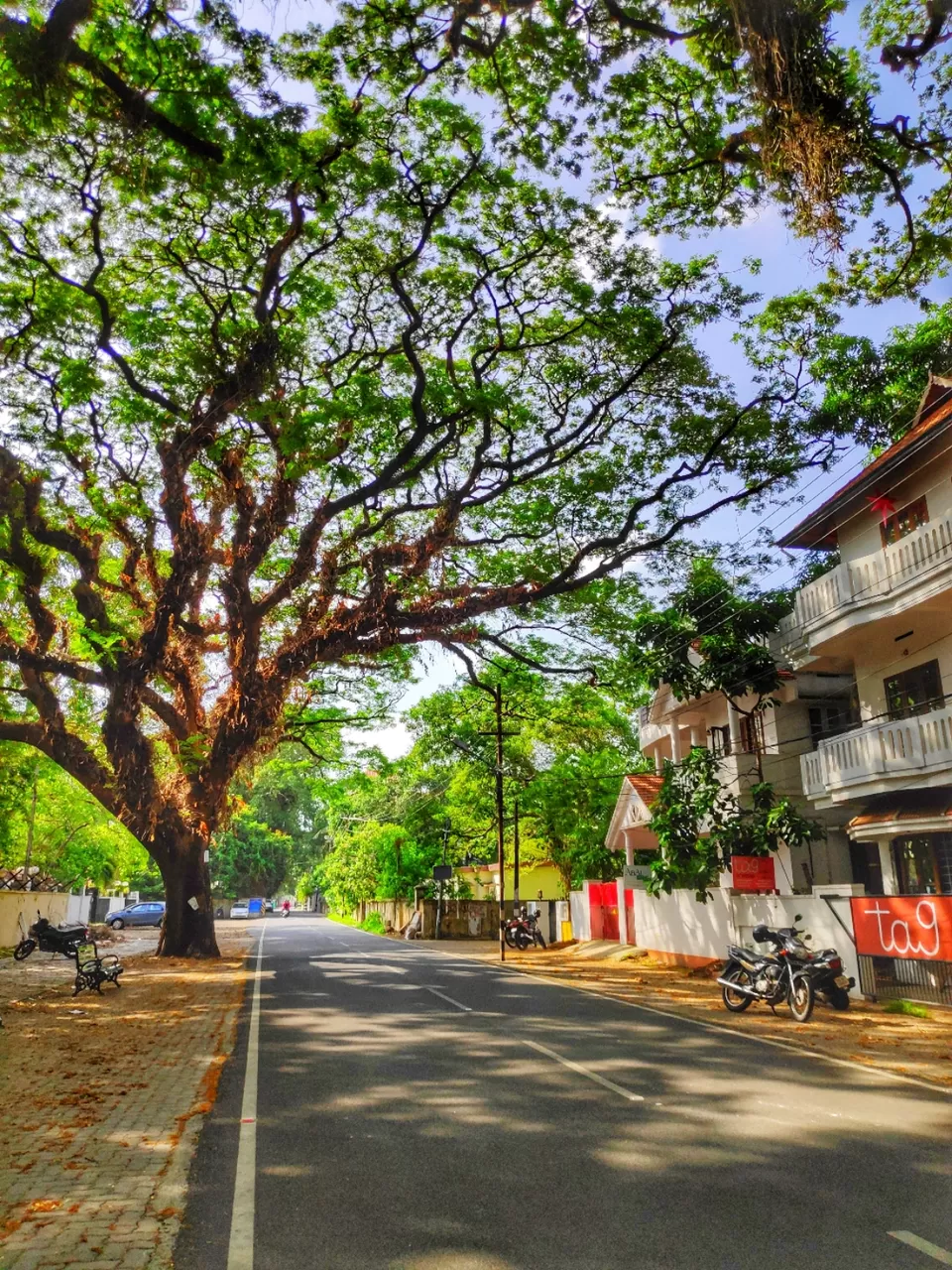
Fort Kochi is like a walk into a large museum town with living tales of India's pre-independence, a town that embraced so many communities and cultures and lives gracefully through it till date! And if the history is too overwhelming, there is always art, colour, food and frolic to pep your tired self!
Travel Tips:
Reaching Fort Kochi -
- Kochi has is own International Airport which is connect to major cities in India. Fort Kochi can be reached by public buses or hired cab or via Ferry boats connecting Kochi to Fort Kochi.
- Also major cities of southern India are connected to Kochi via roads and a overnight bus journey can help you get here.
Note - The shortest travel time and cheapest mode of transport is via the ferry service.
Best Time to visit Fort Kochi -
- Being a coastal town, December to early March are the pleasant months. Also the Kochi-Biennale art festival takes place around this time every two years.
- Late March to May are the hottest here. However we had been there in early May. The heat it bearable if you are used to tropical climate. The time between 12pm to 4pm can be spent exploring museums or cafes will help avoid the heat.
- June to October are the wettest months and may not be so favourable to explore around.
Getting Around Fort Kochi -
- If you are staying in Ernakulam or Kochi city, you might need a cab or bus to reach Fort Kochi.
- Its is a small town and one can get around all the major attraction on foot.
- However I would recommend to hire a bicycle or a bike to move around as the tropical heat might get annoying by midday specially in the summer months.
- Alternatively auto rickshaws (Indian version of Tuktuks) can be hired to get from one point to another.
Staying in Fort Kochi -
- Depending on your preference and budget, you can choose high or midrange Hotels or resorts or budget backpackers hostels. Prefer staying in Fort Kochi as it would be easier to access most attractions from your stay.
Note - If you travel in peak season i.e. December to March, please plan to pre-book you stay from online travel portals.
Places to explore beyond Kochi -
- One can plan to cruise through the backwaters of Kochi and spend some quality time on its beaches.
- Fort Kochi can be explored along with your Kerala tour itinerary since Kochi is the gateway to most tourists visiting Kerala.
- Backwaters of Alleppy or Varkala are just 2 hours away from here. Hill stations like Munnar, Thekkady, Vagamon can be reached by road from here with a travel duration of 4 hours.
You may also like to read: paniyeli poru, bolgatty palace, mattancherry palace, david hall art gallery
Know me more -
Instagram - @saptadeepab
Facebook Page - Seeking Happiness Diaries

